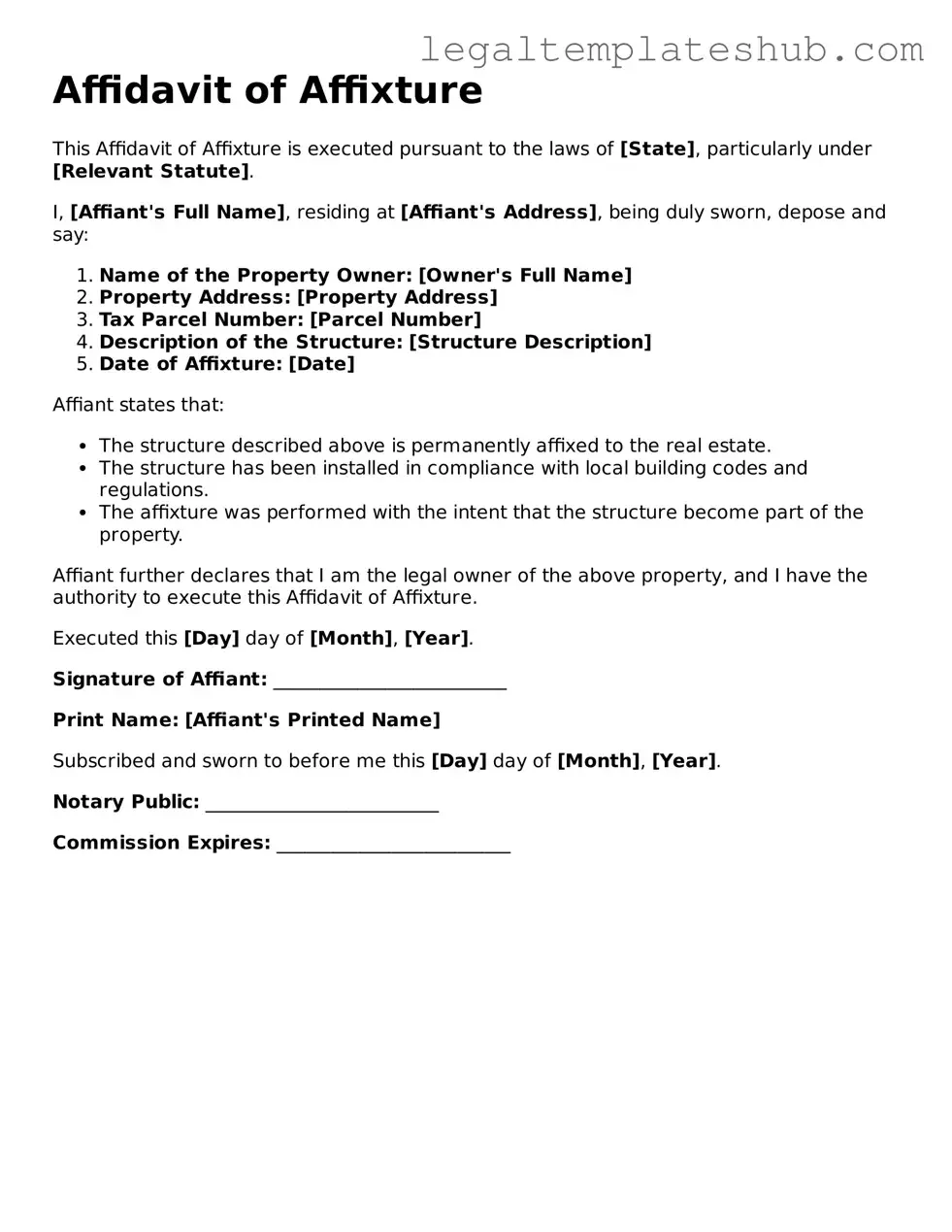Printable Affidavit of Affixture Template
The Affidavit of Affixture is a legal document that confirms a manufactured home has been permanently attached to a piece of real property. This form serves to establish the home as a fixture, thus allowing it to be treated as part of the real estate for various legal purposes. To get started with your Affidavit of Affixture, click the button below to fill out the form.
Access Editor
